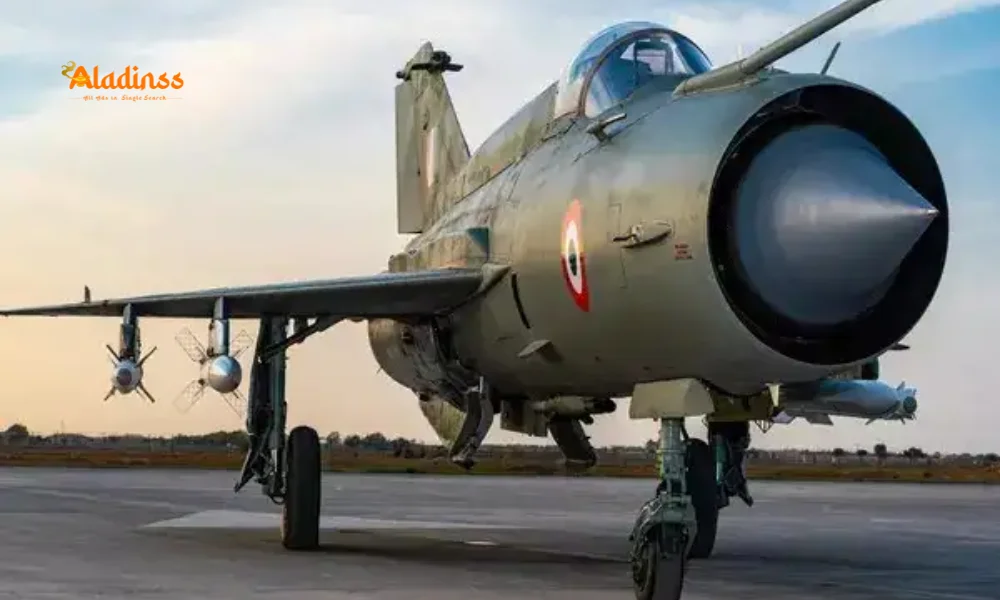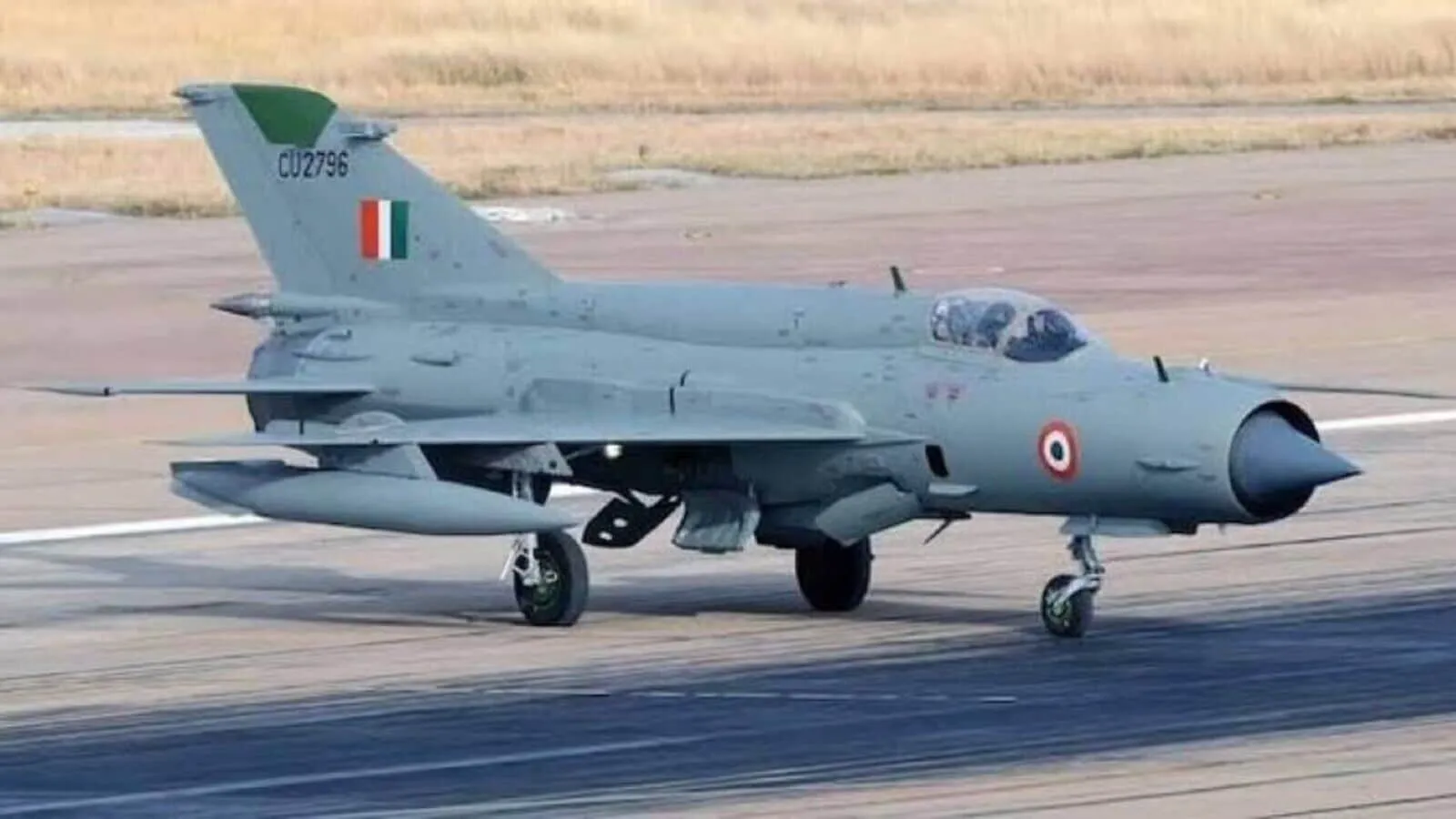MiG-21 Gone: HAL Urged on Tejas Mk1A Deliveries

MiG-21 Retirement: HAL Faces Pressure to Deliver Tejas Mk1A Amid IAF Squadron Shortfall
The Indian Air Force's recent retirement of its last MiG-21 squadrons has intensified scrutiny on Hindustan Aeronautics Limited (HAL) to accelerate Tejas Mk1A deliveries, as India's air power edges closer to parity with Pakistan's 25 squadrons. With the IAF now at 29 squadrons against a sanctioned 42, the MiG-21 phase-out in September 2025 underscores vulnerabilities exposed during Operation Sindoor airstrikes, where legacy jets played a pivotal role despite outdated tech. Air Chief Marshal Amar Preet Singh's viral February 2025 Aero India critique of HAL's delays highlights national security risks, urging a shift from complacency to urgency in indigenous fighter production.

HAL's Rs 47,000 crore contract for 83 Tejas Mk1A jets, signed in 2021, remains unfulfilled with zero deliveries as of September 2025, despite promises of 2024 starts. Engine supply bottlenecks from GE Aerospace have stalled progress, but recent infusions signal potential ramp-up, critical as Pakistan bolsters with 35-40 Chinese J-35 fifth-gen fighters.
Farewell to MiG-21: End of an Era After 62 Years of Service
On September 26, 2025, the IAF bid adieu to its iconic MiG-21 fleet at a poignant Chandigarh ceremony, where Air Chief Marshal Singh piloted the final sortie. Inducted in 1963, India acquired 874 units, with HAL assembling over 60%, earning it monikers like "flying coffin" due to 400+ crashes but revered for combat legacy from 1971 Indo-Pak War to Kargil and Balakot. In Operation Sindoor's May 2025 strikes on Pakistani terror sites post-Pahalgam attack, MiG-21s supported precision missions, downing threats despite age.
The retirement widens IAF's squadron gap to 29 from 42 authorized, each with 16-18 jets, as MiG-21s formed two squadrons' backbone. Defence Minister Rajnath Singh hailed them as "national pride," but experts warn of eroded deterrence against Pakistan's 25 squadrons and China's 66. This phase-out amplifies calls for swift Tejas Mk1A induction to restore balance.
Also Read: Karur Stampede: 41 Dead, New Probe Officer
HAL Tejas Mk1A Delays: Engine Woes and Production Challenges
HAL's Tejas Mk1A program, pivotal for plugging squadron voids post-MiG-21 retirement, faces persistent delays. The 2021 Rs 48,000 crore deal for 83 jets targeted 2024 deliveries, but as of September 2025, none have materialized, with HAL citing GE's F404-IN20 engine shortages. Only three engines arrived by July 2025, after a two-year lag, with 12 more due by March 2026 and 99 by 2028.
Air Chief Marshal Singh's February 2025 Aero India admonition-"no confidence" in HAL's timelines-echoed IAF frustrations, as structures await engines for rollout. HAL vows 16 annual deliveries from 2025-26, aiming completion by 2028 via Nashik and Bengaluru lines, but certification and supply chains persist as hurdles. Amid MiG-21 retirement, such lags risk India's air superiority, especially versus Pakistan's J-35 acquisitions.
New HAL Contract: 97 More Tejas Mk1A to Bolster Indigenous Fleet
In July 2025, the government inked a Rs 66,500 crore deal for 97 additional Tejas Mk1A jets, expanding HAL's pipeline to 180 amid MiG-21 retirement pressures. Deliveries start 2027-28 over six years, featuring 64% indigenous content, including UTTAM AESA radar and Swayam Raksha Kavach EW suite-67 upgrades over the initial batch. This atmanirbhar push counters delays, with HAL targeting 24 jets yearly by 2031 to fulfill orders.
- Enhanced avionics: Uttam radar integration for superior detection.
- EW upgrades: 67 new items for electronic warfare dominance.
- Production ramp: Nashik line adds capacity post-MiG-21 retirement.
- Self-reliance: 64% local content aligns with defence indigenization.
Yet, with first deliveries possibly late 2025 using reserve engines, HAL must overcome GE dependencies to avert further IAF shortfalls versus Pakistan's 25 squadrons.
India vs Pakistan Air Power: Squadron Parity Looms Large
Post-MiG-21 retirement, IAF's 29 squadrons mirror Pakistan's 25, a stark contrast to China's 66, per 2025 assessments. India's 616 combat jets outnumber Pakistan's 387, but qualitative edges like Rafale's long-range strikes in Operation Sindoor-targeting nine terror sites without border crossing-highlight disparities. Pakistan's J-35 deal threatens balance, as IAF juggles two fronts.
Projections warn of 25 IAF squadrons by 2035 sans accelerations, equaling PAF amid Jaguar/Mirage retirements. Tejas Mk1A's delay exacerbates this, demanding HAL's prompt action for deterrence.
Operation Sindoor: Lessons in Air Superiority and Modern Warfare
Operation Sindoor's May 7, 2025, strikes-retaliating Pahalgam's 26 deaths-targeted nine Jaish-e-Mohammed/Lashkar-e-Taiba sites in Pakistan/PoK using BrahMos and indigenous munitions, showcasing calibrated force without escalation. MiG-21s aided, but Rafales/Mirage-2000s executed deep precision hits on radars/hangars, affirming air power's decisiveness.
Pakistan claimed civilian hits and downed Rafales via J-10s, but India's restraint deterred war, per analysts. This validates atmanirbharta, yet MiG-21 retirement and Tejas delays risk voids in future ops versus Pakistan's modernizing fleet.
Current IAF Backbone and Future Horizons: Su-30MKI to AMCA
Su-30MKI's 270 jets form IAF's core post-MiG-21 retirement, backed by 36 Rafales for standoff strikes as in Operation Sindoor. Mirage-2000, MiG-29, Jaguar persist, but 26 Rafale-M for carriers arrive post-2029.
- Su-30MKI: Backbone with upgrades for multi-role ops.
- Rafale: 36 jets enable border-free precision.
- AMCA: Fifth-gen stealth via ADA-DRDO, Safran engines by 2035.
- Private partnerships: Shift from HAL monopoly for faster dev.
AMCA's decade-away induction demands interim Tejas focus, with August 2025 Safran tie-up for engines signaling self-reliance. Amid squadron parity risks with Pakistan, HAL's delivery fidelity is paramount.
Atmanirbharta Imperative: Self-Sufficiency in Engines and Fighters
Post-MiG-21 retirement, atmanirbharta drives IAF modernization, with Tejas Mk1A's indigenous upgrades countering delays. GE's resumed supplies-12 engines in 2025-aid HAL's 16-jet annual goal, but Kaveri engine dev urges diversification. Operation Sindoor's BrahMos success exemplifies domestic prowess, deterring foes sans foreign crutches.
As Pakistan eyes J-35s, India's two-front calculus demands 42 squadrons by 2030 via Tejas/AMCA. HAL's dual contracts test resolve, with production hikes to 24 jets/year essential for air edge. Failure risks parity, but success fortifies deterrence in volatile neighborhood.
Chandigarh's September 2025 farewell to MiG-21s closes a chapter, opening one of indigenous might. With HAL at crossroads, timely Tejas Mk1A rolls could redefine skies, echoing Operation Sindoor's resolve: Air power as swift, decisive shield.
Comment / Reply From
No comments yet. Be the first to comment!










